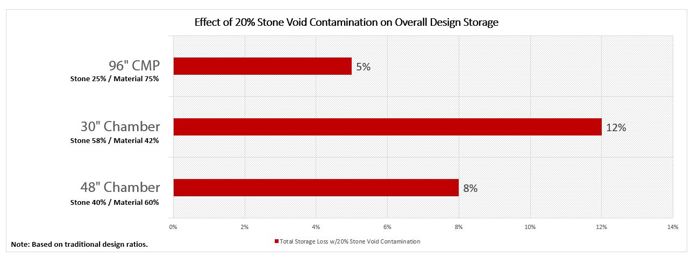
Common Sizing Methodologies for Hydrodynamic Separators Part 1: Point on a Curve
Proper sizing of hydrodynamic separators (HDS) should start with checking applicable regulations. In many cases, local or state regulations will dictate how to size an HDS system and even provide a list of what products are approved for use. If there are no regulatory requirements, the engineer must identify which pollutant(s) need to be removed and their target removal percentage.
There are two primary methods of sizing an HDS system: the Point On a Curve method and the Net Annual method. The Point On a Curve method determines the pollutant removal efficiency of an HDS system at a specific flow rate for a given pollutant particle size. The Net Annual Method determines the pollutant removal efficiency of an HDS system over the course of a year’s worth of rain events for a given pollutant particle size. For part one of this blog series we will look at the Point On a Curve sizing methodology.
To use the Point On a Curve method, one must first determine the specific water quality flow rate (WQQ or WQF), the target pollutant (typically TSS) size, and the removal efficiency required (e.g. 80%). The particle size distribution (PSD) of the target pollutant is often overlooked, but it is just as important as the water quality flow rate, and it can have a drastic impact on the size of the selected HDS system. In most cases, local regulations will dictate how to determine the WQQ. Typically, the WQQ represents the flow rate associated with either a reoccurring event (i.e. the six-month storm) or a water quality depth (i.e. ½ inch of rainfall). Once the criteria are established (e.g. 80% removal of 150 microns at 1 cfs), an HDS system and size is selected to meet the criteria.
Figure 1 shows the TSS removal efficiency of a four-foot diameter HDS system at different flows using OK-110 silica, which has a mean particle size of 110 microns. As the flow rate increases the removal efficiency decreases, as there is less time for the particles to settle. In this example, if the required removal efficiency were 80% removal, the flow rate would be approximately 0.6 CFS for this four-foot HDS system, as demonstrated by the dashed red interpolation lines in Figure 1.
When selecting an HDS system using the Point On a Curve method, it is important to clearly specify all the criteria required. Many manufacturers publish a list of “treatment flow rates” for their HDS systems, but these are not always reliable and cannot always be used to compare one HDS system to another. For example, Manufacturer A may list flow rates that correspond to 80% removal of 50 micron pollutants, while Manufacturer B may list flow rates that correspond with 50% removal of 250 micron pollutants. Some manufacturers may not even include removal efficiencies or particle size gradations with their published flows, which makes selecting the appropriate HDS system even more difficult.

Figure 1 – Observed TSS removal efficiency of an example 4’ HDS system under-maintained conditions (sediment storage at 0% of capacity) using OK-110 silica (mean particle size of 110 microns)
The Point On a Curve method is conservative but simplistic. Once the appropriate PSD and removal efficiency data is gathered, it is easy to design and compare HDS systems from different manufacturers at a specific flow rate. In next month’s post, we will look at the other common HDS sizing methodology - Net Annual Sizing.
